© 2025 ALLCITY Network Inc.
All rights reserved.

No one tell Adam Ottavino that he has seven other players on the field other than himself and his catcher.
It’s been just five days since we reported that Otto is “mentally locked in,” and the Rockies are hoping that no one tells him where the key is. The 32-year-old reliever has struck out eight of the 10 batters he’s faced so far in 2018, some of them absolutely infuriating to hitters, one to the point of ejection. Only one hitter, San Diego’s Manuel Margot put a ball in play in the three innings he’s pitched to this point. And even that at-bat appeared to have ended with the backward K, but Otto didn’t get the call.
At one point, Ottavino was one of the top performing closers in the game and now he is cementing himself as a vital bridge between the Rockies young starters and expensive backend.
The hot start is accelerating the disappearance of a disappointing 2017. How has he been so unhittable? Let’s go through every one of Otto’s 46 pitches in his first three games, and show how his slider-fastball combo is deadlier than a rattlesnake.
Game One: March 29
Ottavino came into the game against the Arizona Diamondbacks with the rout already on in the eighth. He was tasked with dealing with Arizona’s heart of the order: Paul Goldschmidt and Jake Lamb, then pinch-hitter Daniel Descalso and Alex Avila.
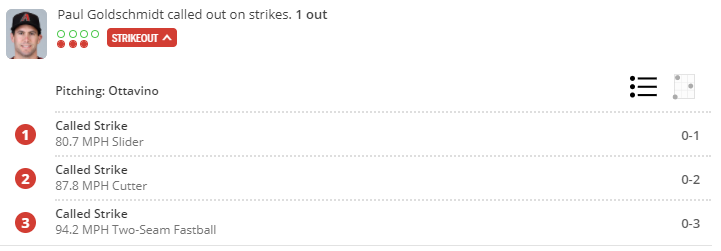
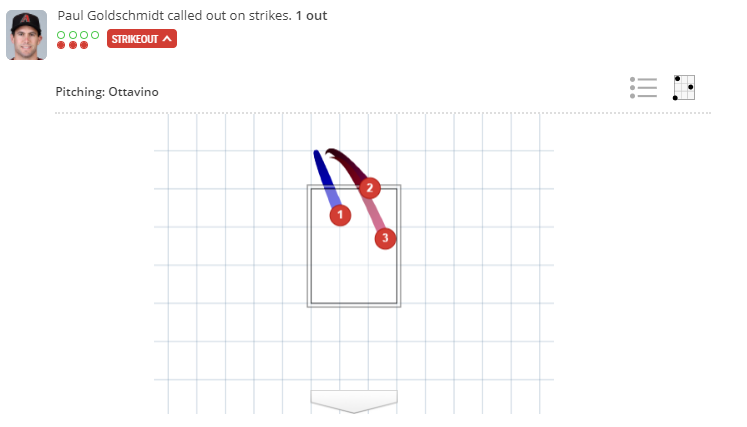
Before we even show you the swings, let us remind you that Paul Goldschmidt is indisputably one of the top hitters in baseball. Good for at least 30 home runs and around 100 walks a season, he is one of the most potent and disciplined hitters in the game. And Ottavino is going to totally mess with his head in this at-bat, or should we call it an at-stand, since he might as well have left his bat in the dugout. Not only that, but Otto’s going to mess with Goldy so much, it’s going to carry over into the next day’s game, which we’ll get to in a minute. Let’s look at the tape.
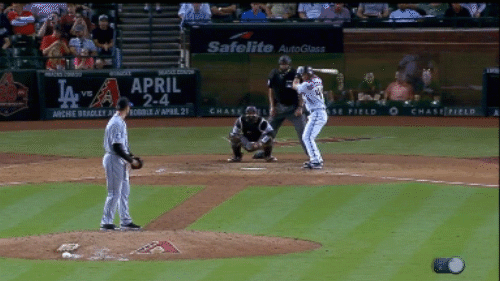
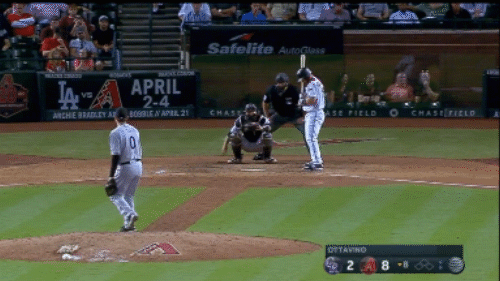
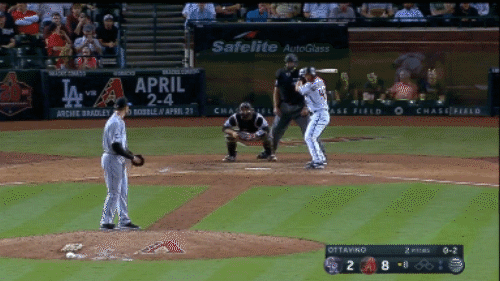
Goldschmidt wants nothing to do with any of these pitches. What we’re going to see in the four hitters Ottavino faces on March 29 and the three on the 30th is a hesitance to be aggressive early in the count, with the exception of Ketel Marte in Otto’s second appearance, likely with good reason. Ottavino had trouble locating last season, a fact that undoubtedly found its way into the scouting reports. So, the Diamondbacks likely wanted to make Ottavino pitch himself into trouble by getting into hitter’s counts or walk.
But here, Goldschmidt—again, an MVP player caliber —scoffs at three straight pitches, all of which are pretty obviously going to be strikes.
What this tells me is Goldschmidt was going to make Ottavino throw him a strike before he swung, and then he didn’t like what he saw on the second pitch cutter. But it is the third pitch—the two-seam fastball that runs back to the outside edge of the plate—that is very clearly going to be a huge part of his game plan this season: make hitters look for the slider, and then shove a pitch seven mph quicker with opposite break down their throats.
Goldschmidt assumes it is going to be one of Otto’s three sliders, trying to get him to fish for something off the plate, especially in an 0-2 count. He is nowhere close to prepared for a fastball that starts outside and comes back. He thinks it’s going to stay there, and by the time he’s figured out the difference, it’s much too late to do anything about it. The sequencing results in the classic good morning, good afternoon and good night. Down goes one of baseball’s premier hitters.
Moving on, let’s see how Jake Lamb, who clipped .282/.386/.552 against right-handers in 2017, did:
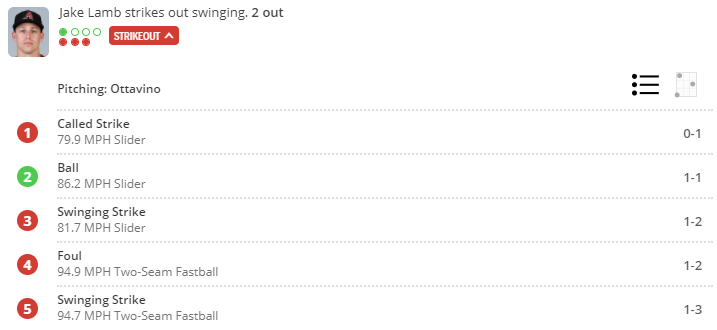
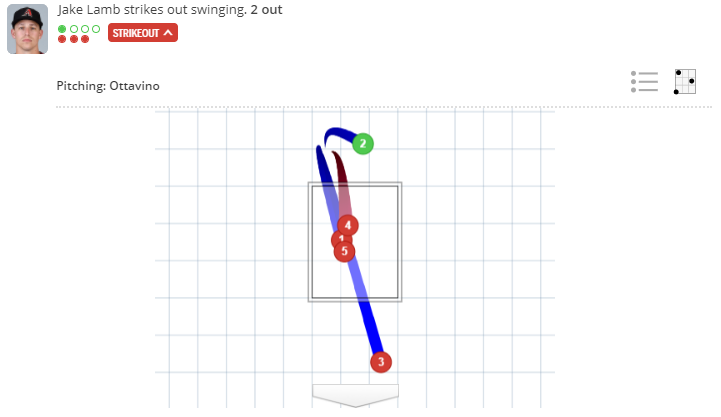


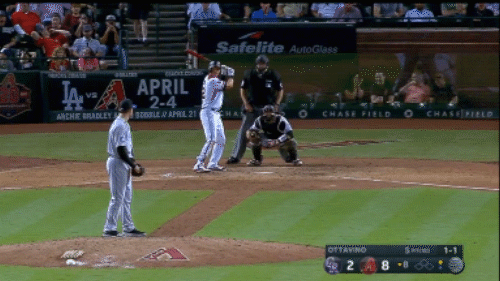
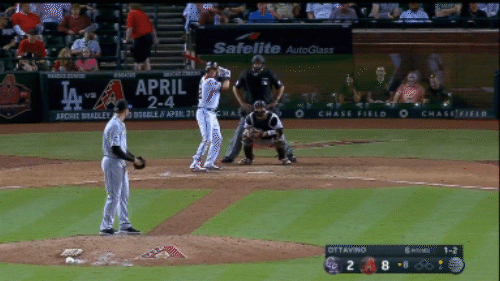

It seems like Ottavino gets away with a very middle-middle slider to start the at-bat, maybe privy to some knowledge that the Diamondbacks aren’t swinging first pitch. In any case, he’ll take the free strike. Next, Iannetta sets up low, and the slider gets away from Ottavino high in the zone. But, he follows it up with another slider, this time where he wants it, with a little more speed and the appropriate bite to get Lamb to give a half-hearted attempt.
Then it’s classic, “Here’s my fastball, try to hit it mentality.” For a guy who can manipulate his slider’s break and velocity, he instead goes right after Lamb with the hard stuff on back-to-back pitches. This could be another case of anticipation-ception: Ottavino knows the hitter is sitting slider, especially after one fastball that Lamb gets a piece of. Lamb might think that might even scare Ottavino off throwing it again, in the exact same place, which happens to be the middle of the zone. But, Ottavino’s fastball has the speed and break to compete, even in the heart of the plate.

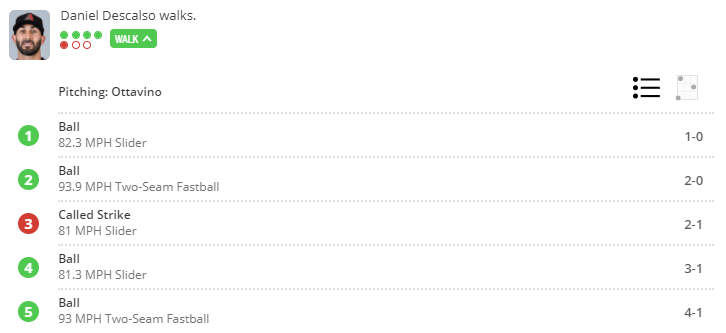
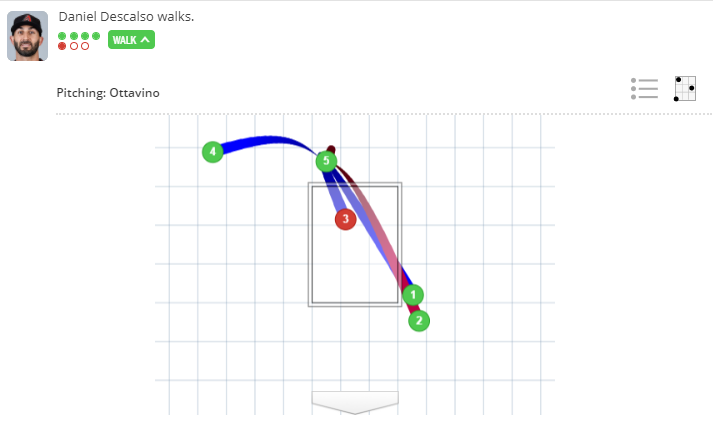



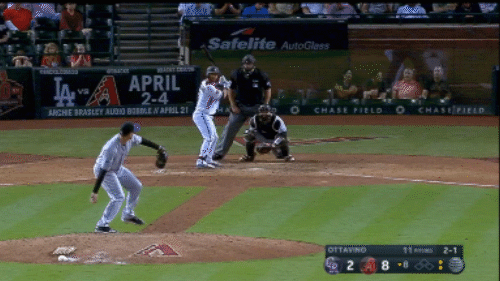
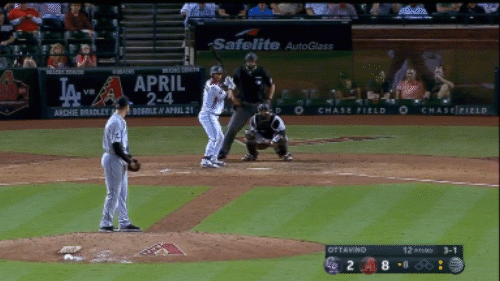
This is probably the worst at-bat for Ottavino so far. He just got caught nibbling the zone, and then lost control of his pitches enough to issue the walk. The first three pitches were competitive, just not enough to compel Descalso to swing early in the count. You can see Iannetta setting up low on the final two balls, both of which soar above the zone. Simple scenario of missed location.

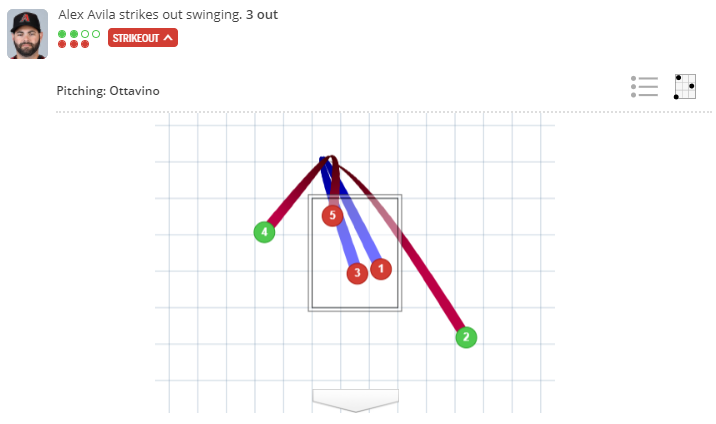

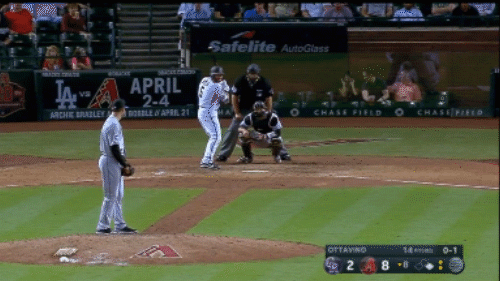



That’ll be three strikeouts on the two-seam fastball in one inning. What’s remarkable is how Ottavino sets up the punch-out pitch with the same type, same eye level and, in Lamb’s case, same location before coming right back to it and inducing a whiff. All night, Otto, intentionally or not, found success at the top of the strike zone with his fastball, something that, as we’ll see in a minute, he’s smart enough to realize and put in his back pocket for the next day. As for March 29, the Rockies may have been outrun by the Diamondbacks, but Ottavino put up a 20-foot thick cement wall in front of the surging offense, bringing it to an emphatic, dead stop.
Game Two: March 30
So it’s early in the season. Adam Ottavino is known for struggling with his location and is pitching on back-to-back days for the first time in 2018 in a much closer game than the previous day, where he needs to limit the damage and give his offense a chance to attempt a comeback. Will he have problems locating his pitches?
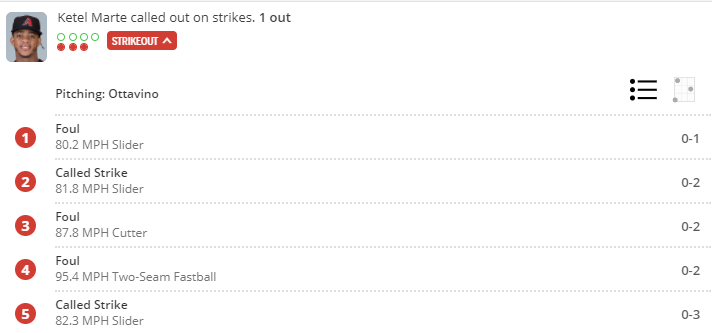
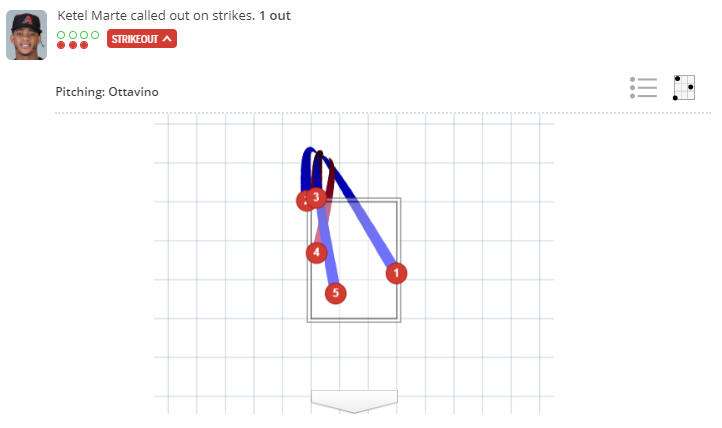


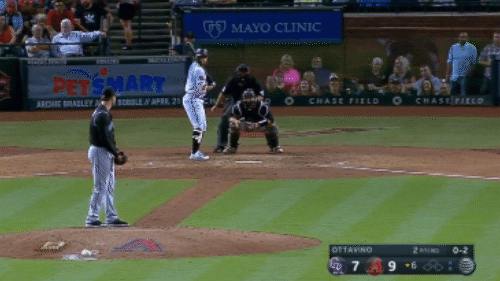

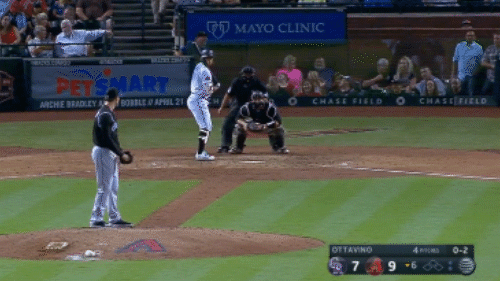
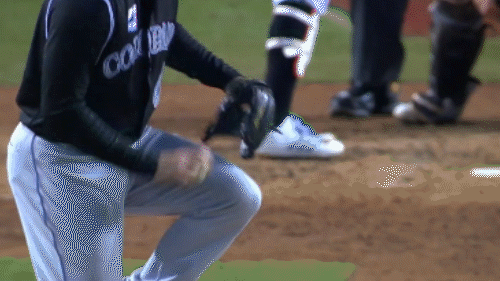
That’s a hard no.
Look at the zone chart again. Marte had no chance. According to Brooks Baseball, the best single-season average lefties had against the slider was .139. Unfortunately for Marte, the most hittable pitch he saw in the whole at-bat was a slider that bore down on his hands, and still wasn’t one he could do anything with unless he saw it coming. He does well to fight it off, but even if he puts it fair, it’s not going anywhere.
And Otto did not give him another chance. He works the outside edge of the plate with the finesse and precision of a CNC machine, even if it’s accidentally on pitch two. But, the real art, once again, is in the pitch sequencing. Where Ottavino convinced previous hitters that a slider was coming only to give them a fastball, he does the opposite to Marte. The hitter begins his swing, but, seeing two fastballs in a row, doesn’t anticipate the change in speed or the ball to come back over the plate in the way only an Ottavino slider does.
I’d be angry too.
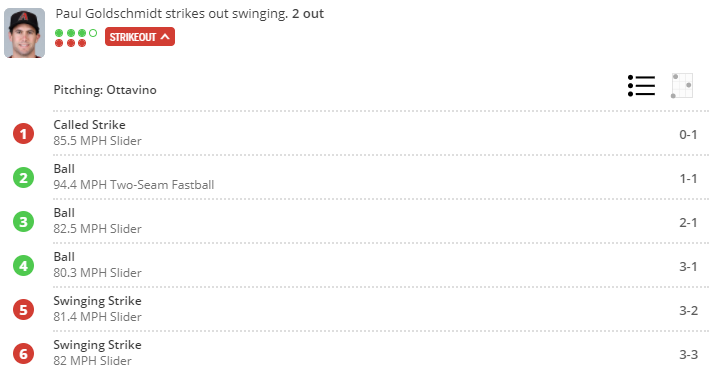
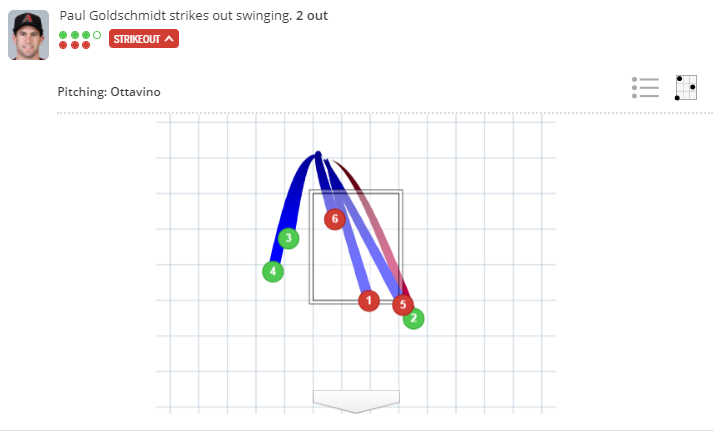
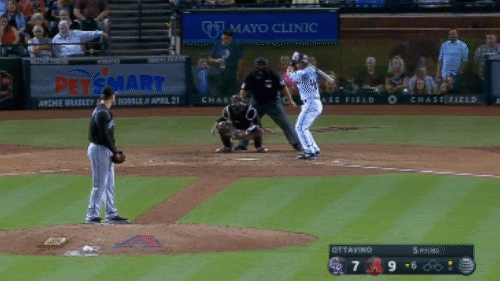
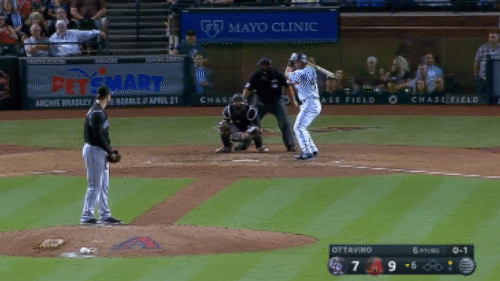
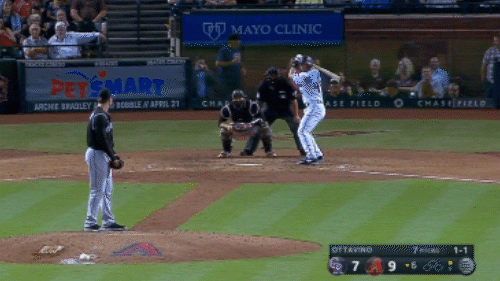
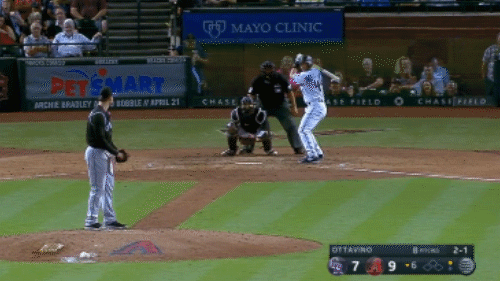
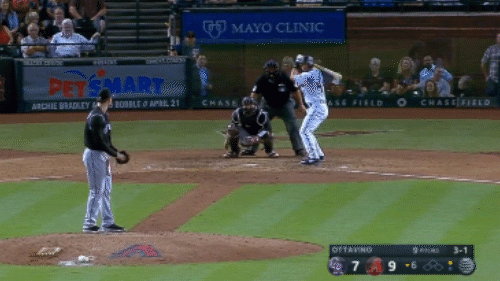

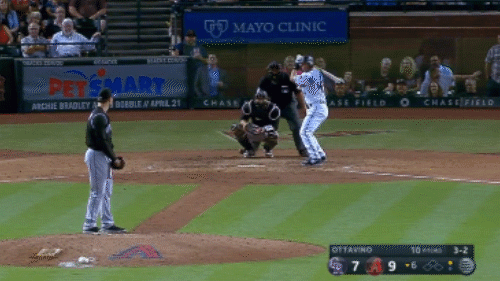
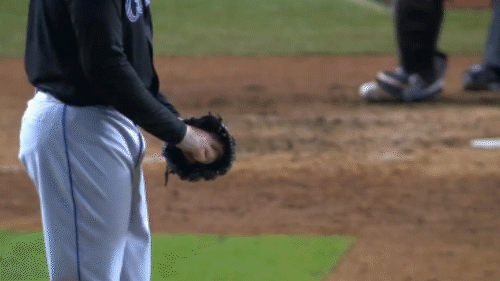
Paul Goldschmidt enters the ring for round two, only to leave the same way.
This time, it is more competitive, and he decides to take some healthy swings. But, Ottavino is prepared for this. He remembers locking up Goldschmidt with a fastball the previous day, and utilizes this when he goes down 3-1. He has enough confidence in his slider to throw it in a fastball count, wherein a missed location results in a baserunner, or worse. The gamble pays off, as he gets the Diamondbacks first baseman to swing through what might have been ball four. If that wasn’t enough, he’s gutsy enough to go to it again, this time high and tight to jam Goldschmidt, turning a strong hitter’s count into a slow walk back to the bench.
Ottavino uses the previous day’s sequencing, where he fooled Goldschmidt with a fastball in a slider count, to reinforce his approach in this at-bat. Goldschmidt saw the confidence in the fastball the previous day, affirming his expectation of one in that count. So when the patented frisbee slider comes, he’s not prepared for it. Either time.
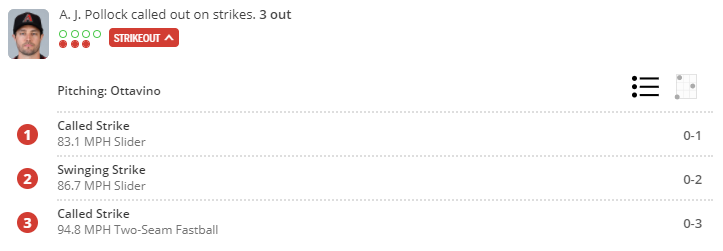
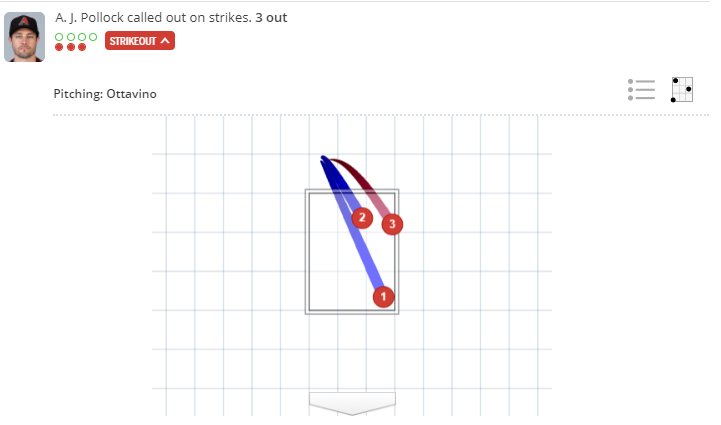
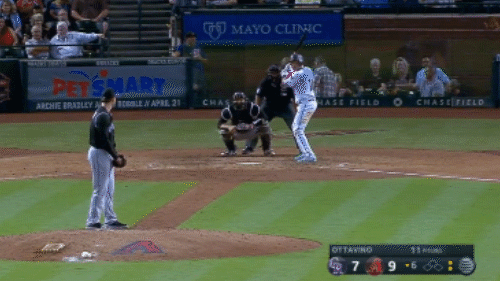


Another scenario of pure domination. A.J. Pollock wants no part of the first slider low and away, and the second one up in the zone looks like a fat, crush-worthy pitch that he just simply doesn’t come close to. Ottavino puts the icing on the cake with another two-seamer that comes back just enough to catch the outside edge and get the call.
Game Three: April 2
Ottavino is called on the sixth inning to preserve a Rockies lead for the first time in 2018. To this point, he’s faced seven hitters and struck out six of them. Now he’s got the 8-9-1 spots in the San Diego Padres order.
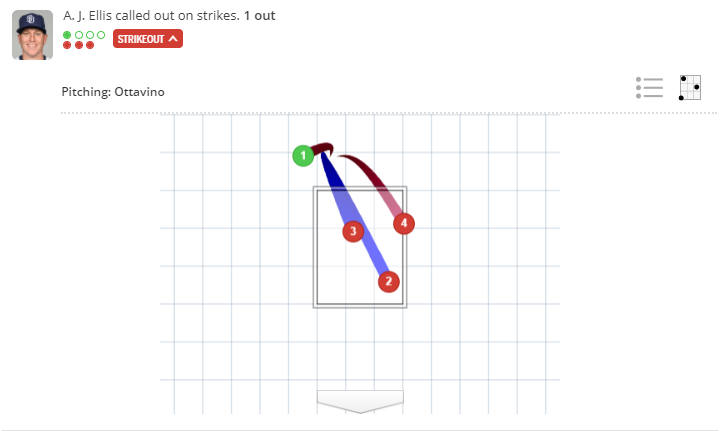
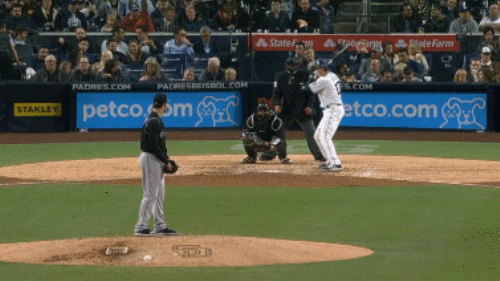

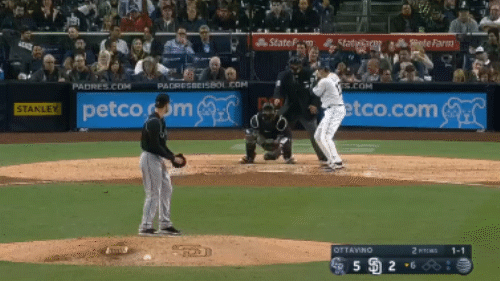


Adam Ottavino is a bad man.
He brushes A.J. Ellis back with a fastball to start the at-bat, and then simply works him away with a pair of sliders, setting up his almost just-as signature now two-seam fastball on the outside edge. When he can get swings and misses on the slider, it only makes hitters less prepared for the fastball designed to make them watch. It’s the third time in as many innings that he’s frozen a hitter for strike three with that pitch this season.
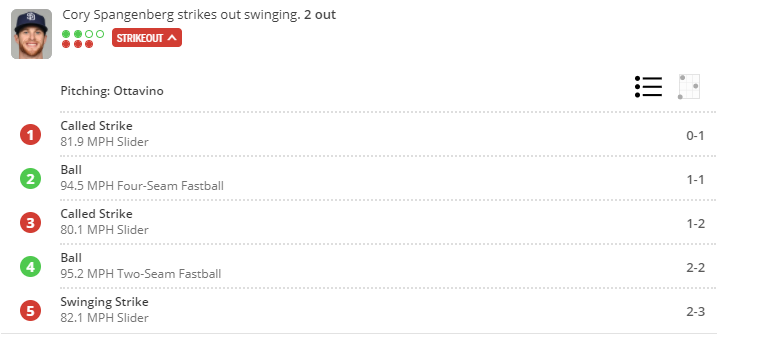
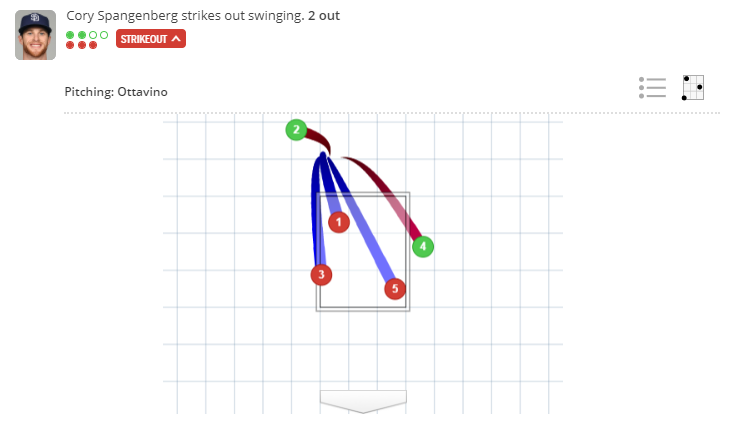
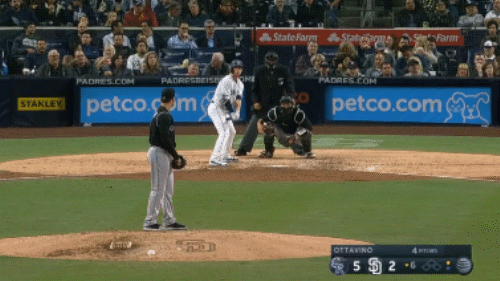
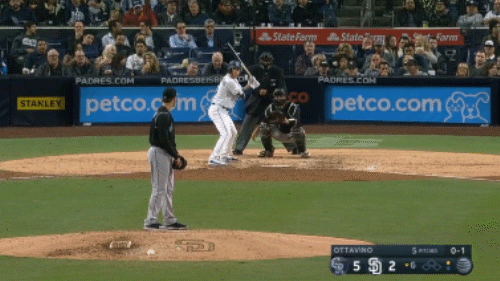


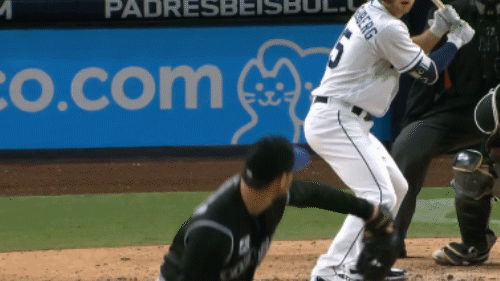


What is Cory Spangenberg supposed to do with any of this?
The first pitch is a strike for only about two inches, the second less so, and the third was featured in the latest UFO unclassified footage from the Pentagon. Even the first ball is pure filth, the same two-seam fastball that locks up righties, that apparently makes lefties run for the hills on a borderline pitch.
But seriously, just watch the replay of strike three. As many times as you like.
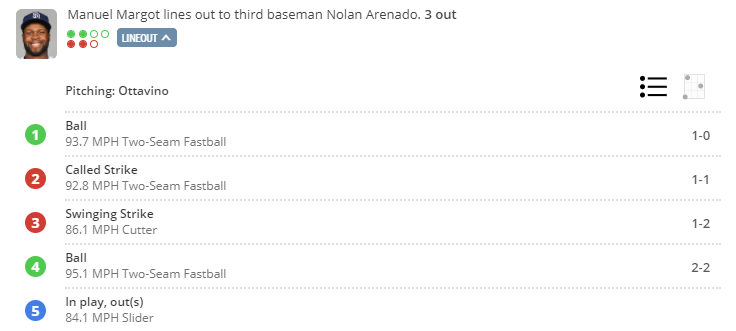
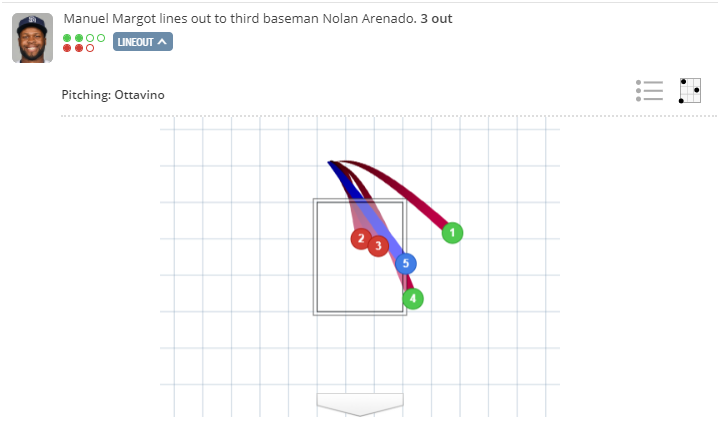

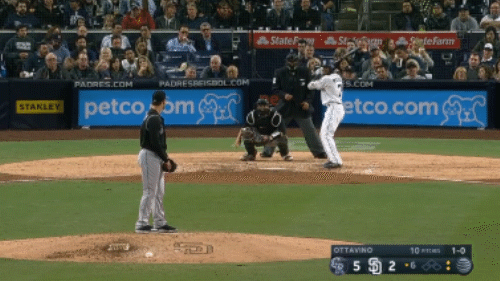
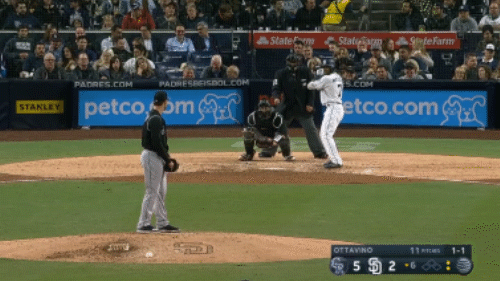

It had to happen sometime. Someone had to put a ball in play. Though, pitch four looked pretty good.
Margot does well to get to this outside slider on the outside edge, and the pitch sequencing likely saves Ottavino from a base hit here. Preceding the slider with a fastball in the same location with an additional 10 mph gets Margot out on his front foot, forcing him to pull it instead of stay back and push it the other way for more power.
Nolan was probably getting restless without something to field anyway.
Conclusion
Where Ottavino lacked command in 2017, he’s improved in the early part of 2018. On a couple occasions, he lost the handle on his slider, letting it fly up in the zone instead of diving across the plate, something that could get him in trouble down the line.
But sometimes everything just breaks your way, and during this stretch, it seems like Ottavino didn’t need luck’s help. Strong pitch sequencing and his usual ridiculous stuff have him looking like the most underrated closer in MLB he was before his Tommy John surgery. When the slider finds some friction, no one is touching it. Over the three innings pitched, the slider was called for a strike 12 times and induced six whiffs. It was fouled off once and put in play by Margot.
It also complemented Ottavino’s fastball arsenal strongly. Because the slider was such a threat, it became a priority for hitters, leaving them vulnerable to a pitch that can be just as lethal in the two-seam fastball. He uses sliders that can vary in velocity from 79 mph to 86 to change speed, eye level, and movement to not only make hitters look foolish, but expose them to the rest of his repertoire as well.
If Ottavino can harness his command like he has in this stretch for the remainder of the season, it realistically gives the Rockies a lights-out bullpen from the fifth inning through the ninth, by way of Chris Rusin, Ottavino, Bryan Shaw, Jake McGee and Wade Davis. A good Ottavino means the young rotation need only survive less than half of the ballgame to stay competitive.
Now, for good measure, here’s every swing and a miss Ottavino got over the past week, all in one handy spot:










Comments
Share your thoughts
Join the conversation




